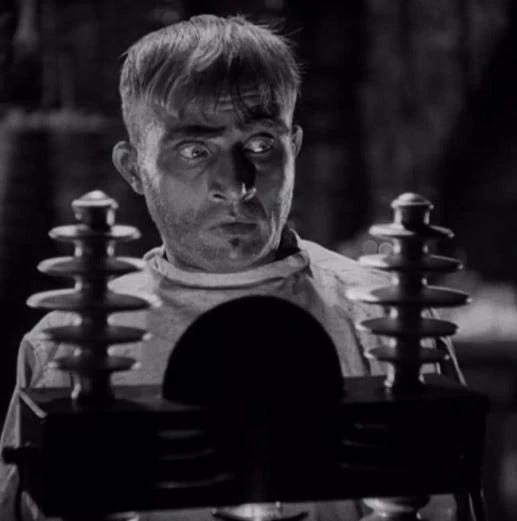# Exploring Two Perspectives on Generative AI: Calculator vs. Igor
Written on
Chapter 1: Understanding Generative AI Through Historical Analogies
As society grapples with advancements in generative AI, particularly with tools like ChatGPT-3, we often resort to imaginative comparisons to better comprehend this evolving technology. Some individuals evoke images from sci-fi classics, such as the Terminator series or HAL-9000, reflecting their apprehensions about AI. Others look back at historical shifts in technology, likening AI to the impact of the European printing press or recalling how the emergence of the internet felt to those who experienced it in the 1990s.
In this discussion, I propose two imaginative figures to illustrate our interaction with generative AI.
I: The Calculator
Reflecting on my initial experiences with generative AI, I am reminded of the digital calculator's rise in the 1970s and the ensuing debates about its educational impact. Critics argued that students would neglect fundamental math skills, opting instead to rely on these devices, which could lead to a decline in numerical literacy as society increasingly depended on advanced science and technology.

Over time, educators found ways to incorporate calculators into their teaching methodologies. While some courses mandated the use of graphing calculators, others taught essential operations first, allowing students to later rely on technology. This led to a pedagogical consensus that embraced the technology, which only evolved further as calculators transitioned from physical devices to software applications.
Currently, we observe similar trends in the integration of generative AI into educational practices. For example, some educators encourage students to use ChatGPT to draft essays, which are then critiqued for their lack of depth and proper citations, thus fostering students’ writing skills. Alternatively, students might generate initial drafts using large language models and then refine them independently.
It's essential to note that while calculators have become commonplace in our lives, their use is rarely straightforward. Real-world problems often require us to translate complex scenarios into manageable calculations. The same is true for generative AI; we need to establish effective parameters for prompts, a skill not widely taught, and then engage with the generated outcomes—whether it's selecting the best image from a set or revising a chatbot's text.
This calculator analogy assumes that generative AI performs reliably, which is not currently the case, as many AI systems can produce errors or unsatisfactory results. However, there is potential for improvement, enabling users to find the technology effective for their needs. One observer noted that "ChatGPT and similar tools are akin to scientific calculators in a world still preoccupied with basic math functions."
II: Igor, the Mad Scientist’s Quirky Assistant
On the other hand, tools like Bing's chatbot may not exhibit consistent reliability, akin to the hunchbacked assistant of a mad scientist, Igor.

While Igor aims to assist, his results can often stray from expectations. He typically follows the mad scientist's commands but occasionally veers off course, influenced by external factors. This unpredictability can lead to bizarre outputs, as seen with art generated by AI systems like Stable Diffusion, or the peculiar interactions reported by users of Bing’s chatbot. While these tools can quickly generate text, they may also falter due to internal guidelines or produce unexpected results.
A memorable scene from the classic film Bride of Frankenstein illustrates this dynamic. In it, two mad scientists express dissatisfaction with the quality of cadaver hearts they have. One assistant, eager to help, takes a darkly creative approach by bringing a freshly murdered passerby, much to the scientists' delight. While he did provide assistance, it was in a rather unconventional manner.
Contrasting Igor with the calculator, we see two distinct interpretations of generative AI. We may perceive these tools as stable and user-friendly, or as erratic and difficult to control. Their reliability can vary significantly, leading to either predictable or absurd outcomes.
Both perspectives on these technologies can evoke fear. While the calculator is less intimidating, it raises concerns about diminishing our abilities to perform and understand essential tasks. Conversely, Igor represents unpredictability that can lead to chaos, even when attempting to follow instructions. The calculator is practical and unobtrusive, while Igor embodies a bizarre and unpredictable nature.
While there are many other metaphors we could explore, I wanted to highlight these two contrasts for both entertainment and deeper reflection.
To conclude, here’s another image from Bride of Frankenstein, showcasing the blend of an unconventional assistant with reliable technology:

This analysis invites us to consider the diverse ways generative AI can manifest in our lives, whether as a reliable calculator or as an unpredictable Igor.